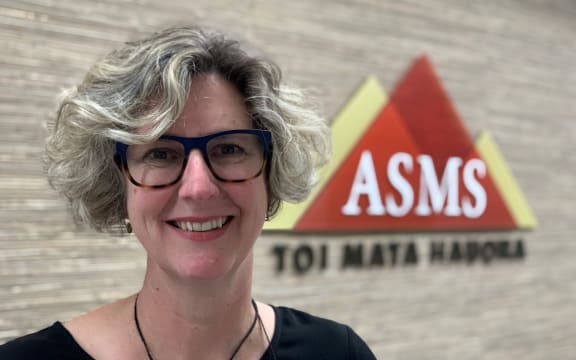The government has yet to decide how to address a dire shortage of radiation oncologists who deliver cancer treatment, despite more than a decade of health workforce planning.
New Zealand is already dozens of oncologists short when it comes to matching Australian cancer care, a new report reveals.
Photo: 123rf
Oncologists have warned time was running out for the stressed public health system, after they unveiled new modelling that showed New Zealand needed more than 100 radiation oncologists (ROs) to match the level of treatment in Australia, but has only 68 across public and private hospitals. The number is expected to drop by 2031.
The government’s health workforce boost last Monday did not provide for training more ROs.
“In relation to how many radiation oncologists that the government is aiming to have in public hospitals, this is still being worked on,” a Te Whatu Ora Health NZ spokesperson said in a statement to RNZ.
It was looking at fresh recommendations from the Cancer Control Agency for the short and long term, based on “initial modelling”.
The senior doctors’ union, the Association of Salaried Medical Specialists, responded to the statement that “the parlous state of workforce planning in health cannot be overstated”.

Sarah Dalton
Photo: Supplied / LDR
ASMS executive director Sarah Dalton said it was not clear the HNZ spokesperson even understood the difference between a radiation oncologist – who delivers radiation treatment for cancers – and a radiologist, who does scanning of all types like MRI, CT and ultrasound.
“The failure to have any detail, or even a proper understanding of the differences within that speciality, speaks volumes about where we’re at with workforce planning centrally,” she said.
Radiology did get a boost last Monday, with a promise to increase training slots by 15 positions by 2025, or five more a year in addition to the 20 taken in at present.
“That needs to be the first of 1000 steps because that is not a sufficient boost,” Dalton said, adding the government boost focused on nurses, largely ignoring clinical workforce needs across specialisations, from oncology to rheumatologists.
Health NZ called them ” priority workforce challenges” and said other specialist cancer workforce issues were also being looked at.
Dalton retorted: “There are recommendations flying around all over health in the public sector.
“Just because someone has made some recommendations doesn’t mean it happens. So I’d take that as flannel.”
A radiation oncologist who worked on the new modelling, Dr Shaun Costello, said he and the Radiologists College (that covers radiation oncologists) had both had input to the Cancer Control Agency’s new recommendations.
“We support the recommendations and are hoping for some action soon,” Dr Costello said.
Specialists say most new graduates head offshore, mostly to Australia, immediately for much higher pay and better conditions, and no affordable way has been found to bond them to stay in New Zealand.
Some return, but public hospital radiation oncology and radiology workforces are dominated by migrants, who must be recruited at big cost in an intense global market.
RNZ asked HNZ if salaries here could be raised to keep more graduates in this country.
The spokesperson said the “initial focus has been on securing more training places”.
The spokesperson added the Senior Doctors Collective Agreement set the rates for pay, and a 6 percent pay rise had recently been agreed.
Dalton said this was wrong.
After 18 months of pay talks, the ASMS had failed to secure its claim for a rise to match the cost of living rise, and settled on a flat $6000 payout, which was less than half of 6 percent for specialists, she said.
Later, HNZ issued a correction, saying the $6000 gross for senior specialists equalled a salary rise of 2.4-3.6 percent.
On the radiology front, five extra trainees are set to start in each of the next three years in February.
The National Radiology Advisory Group was working on workforce models, HNZ said.
It also had a Radiation Oncology Working Group looking at creating fellowship positions – there are no public-funded positions – and how to boost nursing and radiation therapists to support radiation oncologists.
But on the radiation oncologist front, Dr Costello said they were still waiting for action.
“There is certainly the capability to increase the training,” he said.
“We do have people who are waiting for training places. So we have more applicants than we have places at this present time.”



















Discussion about this post